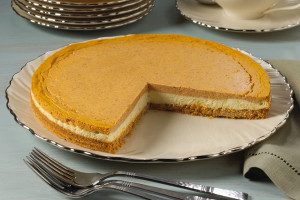Food Facts Friday: Pumpkins
Autumn is upon us with beautiful vibrant colored leaves and the crisp fall air. This is the season for pumpkins, and the warm comforting smell it brings to the holiday season. We celebrate fun holidays like Halloween, carving jack-o-lanterns and making delicious desserts like pumpkin pie for Thanksgiving.
The name “pumpkin” comes from the Greek word “pepon,” meaning “large melon.” Scientifically speaking, pumpkins are a fruit (they contain seeds). However, when it comes to cooking, they are often times referred to as a vegetable. There’s over 1 billion pounds of pumpkins grown in the United States each year.
Nutrients in Pumpkins
Pumpkin is a higher potassium food and may be limited for a low potassium kidney diet and for those on hemodialysis. However, in moderation pumpkin can be beneficial for your overall health. One cup of fresh pumpkin provides:
- 30 calories
- 2.8 g protein
- 51 mg phosphorus
- 1.2 mg sodium
- 540 mg potassium
It adds beta-carotene, vitamin C and fiber to the diet. The potassium content for pumpkin products can vary.
- 1 cup of canned pumpkin = 505 mg
- 1 cup of canned pumpkin pie mix = 540 mg
- 1/2 cup roasted whole pumpkin seeds = 294 mg
Pumpkin Recipes
When looking at pumpkin recipes it is important to note the amount of pumpkin in the dish. Typically, it needs to contain less than 140 mg per serving to be considered low potassium. In addition to the pumpkin, consider other potassium-containing ingredients.There are a few methods to reduce the amount of potassium in pumpkin, as well as potatoes and winter squash. One such way is to boil small pieces of pumpkin for 10 minutes, drain and add fresh water and boil until cooked. This can reduce potassium by 1/3 to 1/2 of the original amount.
Below are some low-potassium pumpkin favorite recipes containing less than  140 mg of potassium per serving. The amount of pumpkin puree ranges from 1/2 to 1 cup per recipe.
140 mg of potassium per serving. The amount of pumpkin puree ranges from 1/2 to 1 cup per recipe.
- Easy Pumpkin Cheesecake
- Pumpkin Cheesecake Bars
- Frost on the Pumpkin Pie
- Pumpkin Cranberry Bread
- Pumpkin Layer Cheesecake
Also check out DaVita.com for additional kidney-friendly pumpkin recipes.
References:
- https://web.extension.illinois.edu/pumpkins/history.cfm – accessed 10/2/19
- https://nutritiondata.self.com/facts/vegetables-and-vegetable-products/2600/2 – accessed 10/16/19
Additional Kidney Diet Resources
Visit DaVita.com and explore these diet and nutrition resources:
DaVita Kidney-Friendly Recipes
This article is for informational purposes only and is not a substitute for medical advice or treatment. Consult your physician and dietitian regarding your specific diagnosis, treatment, diet and health questions.

Recent Comments